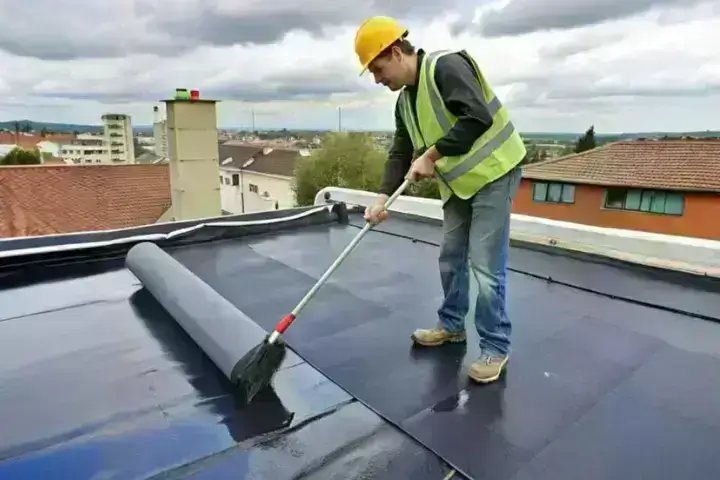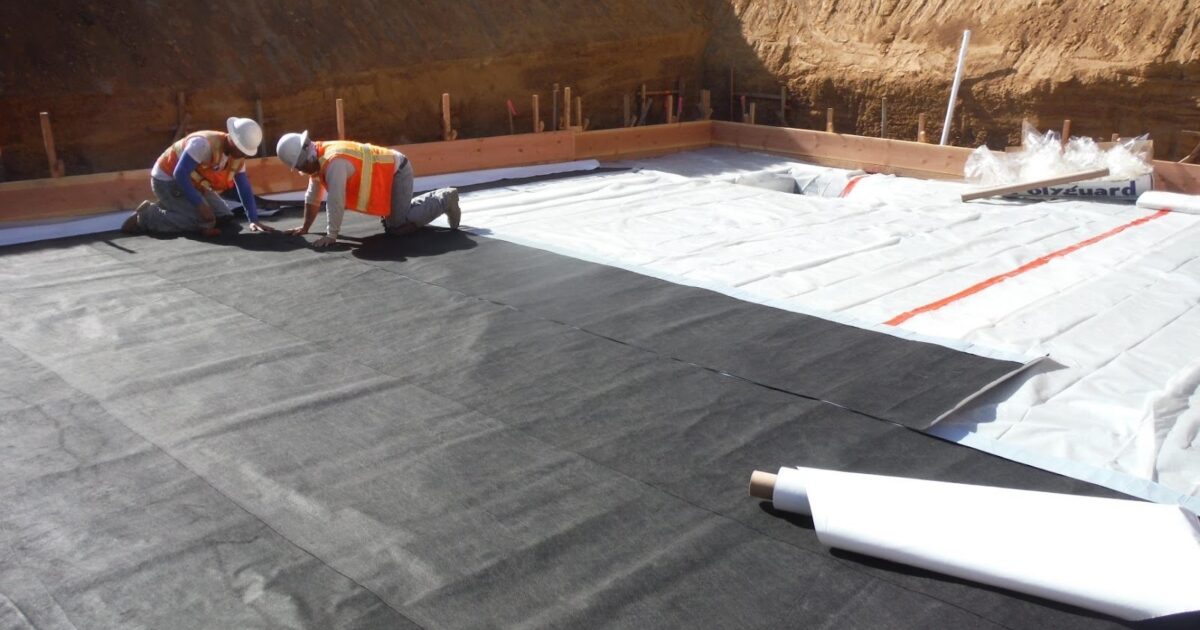Foundation waterproofing Omaha: Top Myths Debunked
Types of Waterproofing: Discovering the Different Methods and Their Applications
Waterproofing is an important element of building and construction and upkeep. It safeguards frameworks from the detrimental impacts of water damage. There are several approaches offered, each with its one-of-a-kind applications and benefits. From membrane layer systems to cementitious solutions, comprehending these options is essential for effective application. The selection of waterproofing method can substantially impact toughness and longevity. Checking out these numerous strategies reveals their distinct advantages and possible obstacles, prompting more consideration of suitable solutions.
Membrane Waterproofing Solutions
Membrane waterproofing systems work as an important obstacle versus water breach in various frameworks. These systems typically are composed of slim sheets made from materials like rubber, polycarbonate, or bitumen, which are related to surfaces to avoid wetness penetration. They can be installed over or below quality and are specifically efficient in locations prone to high water direct exposure, such as cellars, roof coverings, and foundations.The installment process entails cleansing the substratum, using adhesives or primers, and precisely suitable the membrane to ensure full protection. Membrane layer systems can be either completely stuck, mechanically connected, or laid loose, depending upon the particular needs of the job. They provide longevity and adaptability, accommodating structural movements without endangering their waterproofing capabilities. Additionally, these systems can be reinforced with additional layers for boosted defense. Inevitably, membrane layer waterproofing systems are important for protecting structures against water damages and preserving long-term integrity.
Liquid-Applied Waterproofing Coatings
Liquid-applied waterproofing coverings offer a versatile remedy for securing surfaces from water seepage - French drain installation Omaha. These coatings contain liquid materials that, when applied, develop a seamless, adaptable membrane layer. Their versatility permits application on different substrates, consisting of concrete, steel, and timber. The coatings can be made use of in varied settings, from property to commercial setups, making them ideal for roofs, foundations, and below-grade structures.One considerable advantage of liquid-applied layers is their capability to satisfy irregular shapes and permeate fractures, creating a robust obstacle versus dampness. They often exhibit outstanding adhesion residential or commercial properties and resistance to UV radiation, making certain longevity and longevity. Additionally, the application process is commonly straightforward, enabling fast installment and reduced labor costs. This method also reduces the danger of water merging, as the continual layer properly routes water far from susceptible locations. Generally, liquid-applied waterproofing layers are an effective choice for extensive water security
Cementitious Waterproofing Solutions

Cementitious waterproofing solutions provide a robust alternative for structures calling for reliable moisture protection. These systems primarily utilize a blend of concrete, sand, and chemical additives to produce a water resistant obstacle. They are frequently used to surfaces such Resources as concrete walls, foundations, and floors, giving a long lasting, resilient defense versus continue reading this water intrusion.One of the essential advantages of cementitious waterproofing is its simplicity of application; it can be applied using a brush, roller, or spray, making it ideal for different project dimensions. Furthermore, this technique is compatible with lots of surface areas and can usually be made use of combined with other waterproofing techniques.Cementitious remedies are particularly reliable in settings where water exposure is an issue, such as cellars or below-grade structures. Their excellent adhesion homes assure that they bond well with substrates, offering a strong and nonporous layer versus moisture penetration.
Bentonite Waterproofing
Bentonite waterproofing is a highly efficient approach that utilizes sodium bentonite clay to create an all-natural obstacle versus water. This method exploits the distinct residential or commercial properties of bentonite, which broadens upon contact with water, securing any kind of potential leakages and protecting against dampness infiltration. It is frequently made use of in various applications, consisting of foundation walls, tunnels, and retaining wall surfaces, where water resistance is essential.Bentonite can be applied in a number of kinds, such as panels or blankets, giving convenience in setup. Its capability to self-seal makes it an attractive alternative for areas based on shifting dirt or ever-changing water levels. Additionally, bentonite waterproofing is eco friendly, as it is a natural material that does not present damaging chemicals right into the surroundings.
Drain and Outside Waterproofing Systems
Reliable waterproofing usually involves a mix of methods, consisting of drainage and exterior systems. Drain systems, such as French drains and sump pumps, are developed to redirect water far from frameworks, lowering hydrostatic pressure against foundations. These systems are essential in preventing water buildup that can result in structural damages and mold growth.External waterproofing, on the other hand, involves Clicking Here using protective obstacles to the building's outside. Strategies such as the installment of water resistant membranes, layers, or sealants can assist prevent water seepage. This approach not just safeguards the structure but also improves the overall longevity of the structure.Together, drain and exterior waterproofing systems form a complete solution to manage water efficiently. By applying these methods, home owners can secure their financial investments versus the destructive impacts of wetness, making sure long-lasting stability and safety and security for their structures.
Often Asked Concerns
How Do I Select the Right Waterproofing Approach for My Task?
Picking the appropriate waterproofing approach relies on aspects such as job type, ecological conditions, budget plan, and preferred durability. Assessing these facets enables informed decisions customized to details demands and needs.

Can Waterproofing Be Applied in Winter Conditions?
Waterproofing can be used in winter problems, yet it requires certain materials and methods. Cold temperature levels may affect treating times and attachment, demanding cautious selection of products developed for low-temperature application.
What Are the Usual Indicators of Waterproofing Failing?
Usual indicators of waterproofing failing consist of visible water spots, peeling off paint, wet smells, mold and mildew development, and fractures in walls or structures. Basement waterproofing Omaha. These indicators recommend that wetness is permeating the barrier, jeopardizing its performance
How Much Time Does Waterproofing Last Prior To Needing Upkeep?
The longevity of waterproofing differs, usually lasting in between 5 to ten years. Variables such as material high quality, ecological problems, and maintenance methods influence its resilience, necessitating periodic inspections to ensure efficient security versus water invasion.
Are There Eco-Friendly Waterproofing Options Available?
The question of eco-friendly waterproofing options discloses a growing rate of interest in sustainable products (Yard drainage Omaha). Different natural substances, such as plant-based sealants and recycled products, supply reliable services while reducing ecological effect, attracting environmentally aware consumers